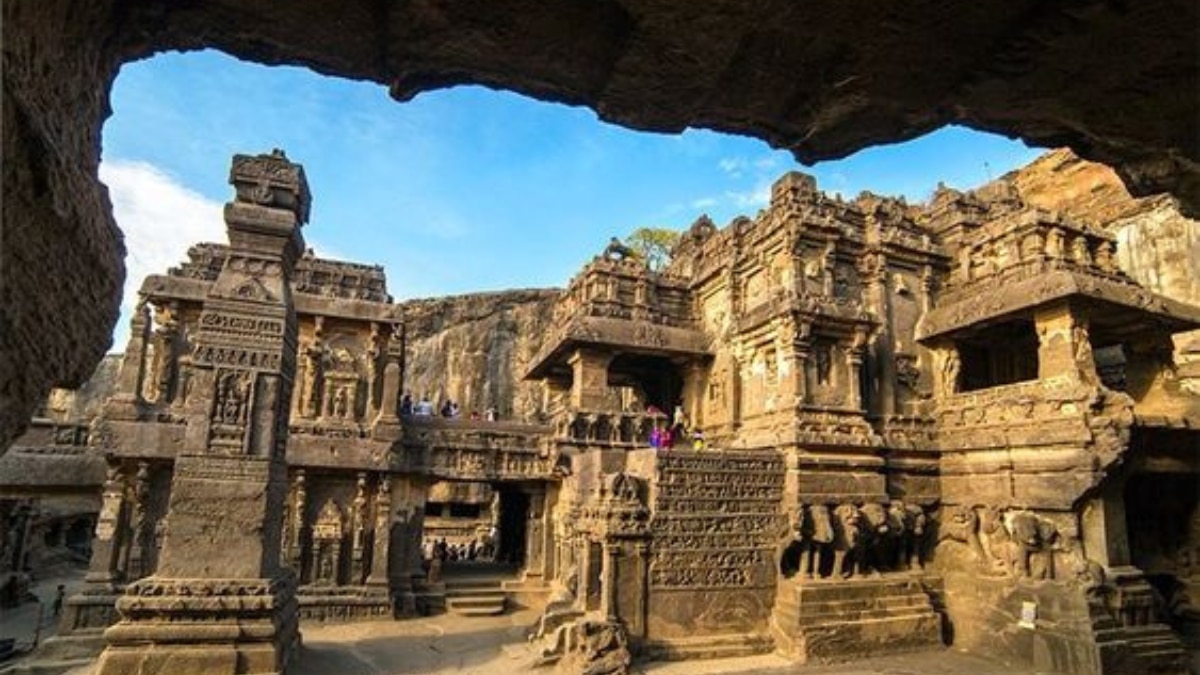India has a collection of UNESCO World Heritage Sites that reflect its rich history and diversity. From majestic frts to ancient temples and beautiful landscapes, these popular tourist destinations offer a unique view of the country's heritage. Exploring them reveals the beautiful architecture and art of the past while highlighting the signifance of historical events that spaed India.
Each place tells a story and gives us a deeper understanding of India's cultural heritage and its lasting impact on the world. Here Are A Few UNESCO World Heritage Sites Of India - 1. Ajanta Caves, Maharashtra: Ajanta Caves, a UNESCO World Heritage Site in Mahashtra, has 30 stone caves dating from the 2nd century BCE to the 480 CE.

The caves are famous for their fine art, with beautiful carvings and sculptures depicting the Jataka stories and various other Buddhist themes. These caves demonstrate the skill and creativity of ancient Indian workers and provide a wonderful insight into the spiritual and cultural life of the time. Nestled in a picturesque horseshoe-shaped valley, the Ajanta cave is an important cultural and historical treasure that still attracts visitors from all over the world.
(Image Source: Pinterest/World History Encyclopedia) 2. Ellora Caves, Maharashtra: Ellora Caves in Maharashtra, features 34 rock cut caves carved between 6th and 10th centuries. The caves features a blend of Hindu, Buddhist and Jain architectural styles, reflecting the religious diversity of time.
Ellora Caves is famous for the stunning Kailasa Temple, which has intricate sculptures and impressive artwork carved into the rock. The caves are not just a beautifully carved architecture, but also an important cultural site that offers insight into ancient Indian art, spirituality and craftsmanship. (Image Source: Pinterest/twitter) 3.
Nanda Devi And Valley Of Flowers National Parks, Uttarakhand: Nanda Devi and Valley Of Flowers National Parks in Uttarakhand are known for their stunning natural beauty and biodiversity. Nanda Devi National Park is home to the beautiful Nanda Devi Peak, the second highest mointain in India. It has beautiful landscapes, deep valleys and rich wildlife and animals including rare species like the snow leopard.
In 2005, it was expanded to encompass the Valley Of Fowers National Park which attracts botanists and nature enthusiasts due to its unique ecosystem and diversity. The beautiful hiking trails make it a paradise for nature lovers. (Image Source: Pinterest/viewuttarakhand) 4.
Group Of Monuments At Hampi, Karnataka: The Group of Monuments at Hampi in Karnataka is known for its stunning ruins and historical significance. Hampi was the capital of the 14th century Vijayanagar Empire and is home to an impressive number of temples, palaces, and markets set against a beautiful landscape of rock covered hills, including the Virupaksha Temple. Boasting Dravidian architecture and intricate carvings, Hampi is a must visit destination for history lovers and travelers looking to explore its rich heritage.
(Image Source: Pinterest/thingsinindia) 5. Chittorgarh Fort, Rajasthan: Chittorgarh Fort in Rajasthan, is one of the largest forts in the country and a symbol of Rajput bravery. Covering over 700 acres, the fort is situated on a hilltop and has many beautiful structures, including palaces, temples and a large water tank.
Major attractions include the magnificient Rana Kumna Palace, the Meera temple and Vijay Stambh, also known as the Victory Tower, built to commemorate Maharaja Kumba's victory over the invaders. The architecture of the fort reflects the rich history and culture of the Rajputs, while its ruins tell tales of bravery and sacrifice. Chittorgarh Fort remains an important site for those interested in the royal history of India.
(Image Source: Pinterest/fodorstravel) 6. Gangaikonda Cholapuram, Tamil Nadu: Gangaikonda Cholapuram in Tamil Nadu, is an ancient city known for its remarkable temples and historical significance. It was built by Rajendra Chola I in the 11th century and became the capital of the Chola dynasty after the conquest of northern India.
A fine example of architecture, it is characterised by its massive gopurams and beautiful sculptures. Dedicated to Lord Shiva, this temple contains beautiful arts of the Chola period. Gangaikonda Cholapuram is an important cultural centre that showcases the grandeur of the Chola Empire and its contribution to art and architecture.
(Image Source: Pinterest/tamilanadudistricts) 7. Khajuraho, Madhya Pradesh: Khajuraho is famous for its temples made with intricate erotic sculptures and carvings. Built between the 9th and 11th centuries by the Chandela dynasty, these temples represent the pinnacle of medieval Indian architecture and art.
The sculptures in the temple of Lord Shiva and Lakshmana display extraordinary detail. These monuments showcase the rich cultural and religious heritage of the time, depicting all aspects of life, love and spirituality. Khajuraho remains a major attraction due to its unique artistic and historical significance.
(Image Source: Pinterest/natgeo).




















